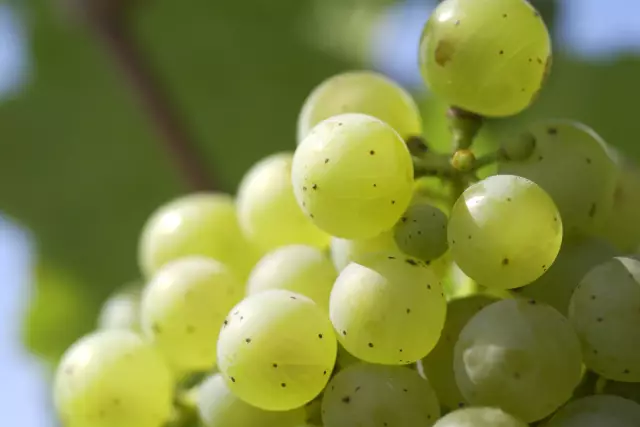White Pinots on the rise in Germany
On the occasion of the German Wine Institute's (DWI) top theme "White Pinot Paradise" at this year's ProWein, the DWI provides information on the most important facts and developments of the Pinot Blanc, Pinot Gris and Chardonnay varieties.

The German wine-growing regions are not only home to the most Riesling vines in the world, but German winegrowers are also world leaders in Weißburgunder (Pinot Blanc) cultivation with around 6,400 hectares of vineyards. With 8,400 hectares of Grauburgunder (Pinot Gris), Germany ranks third in the world behind Italy and the USA. Together with the Pinot relative Chardonnay and the speciality Auxerrois, white Pinot varieties account for 17.5 percent of the total German vineyard area. Their cultivation area has tripled since 2000 to a good 18,000 hectares.
The mild, cool German climate provides excellent growing conditions for white Pinot varieties. Thanks to the different terroirs of the wine growing regions from Baden to the Ahr and from the Mosel to Sachsen, they produce exceptionally manifold wines. All three varieties are available as fruity lean wines, as well as wines aged in barriques or tonneau with a powerful body.
The white Pinot varieties are characterised by a balanced fruitiness and a certain mellowness, which makes them excellent food companions and contributes to their growing popularity.
Grauburgunder
Grauburgunder, also known internationally as Pinot Gris or Pinot Grigio, stands out in the vineyard with its compact, mauve-coloured grapes, which is partly due to its mutation from Pinot Noir. Delicate aromas with notes of ripe pears, pineapple, quince and green nuts characterise German Pinot Gris.
Grauburgunder is the most important white Pinot variety in Germany. Its cultivation area has tripled to 8,400 hectares since 2000. This has made it the third most important German white wine variety. Four fifths of the vineyards are located in Baden (Kaiserstuhl), Rheinhessen and the Palatinate.
Weißburgunder
Weißburgunder, also known as Pinot Blanc or Pinot Bianco, is a mutation of Pinot Gris that has been known since the 14th century. In this country, Pinot Blanc produces particularly delicate wines with a fine nutty flavour that is often reminiscent of citrus fruits, pears or fresh apples.
It can be found in all German wine-growing regions, especially in Rheinhessen, Baden and in the wine region Pfalz, which account for three quarters of the 6,400 hectares of vineyards. There, it has excellent growing conditions, especially on stronger soils.
Chardonnay
Chardonnay has been approved for cultivation in Germany since 1991 and has enjoyed increasing popularity ever since. Its vineyard area has increased fivefold to 3,000 hectares since 2000. Because the variety can also cope with higher temperatures, it is well adapted to the changing conditions caused by climate change. In addition, it is also very well-suited for sparkling wine.
In recent years, the quality of Chardonnay wines produced in Germany has been increasingly recognized, both at home and abroad. Young and fresh, they captivate with aromas reminiscent of pear, melon, apple and exotic fruits. In high-quality wines from small wooden barrels, the fruit aromas are complemented by hints of butter, brioche, nut and vanilla.
Cultivation of white Pinot varieties in Germany 2000 / 2024
|
Vineyard area 2000 (ha) |
Vineyard area 2024 (ha) |
Difference 2000/2024 (ha) |
Difference 2000/2024 (%) |
|
|
Grauburgunder |
2,770 |
8,404 |
5,634 |
203.4 |
|
Weißburgunder |
2,594 |
6,362 |
3,768 |
145.3 |
|
Chardonnay |
610 |
3,050 |
2,440 |
400.0 |
|
Auxerrois |
83 |
310 |
227 |
273.5 |
|
Sum of white Pinot varieties |
6,057 |
18,126 |
12,069 |
199 |
|
% share of total vineyard area |
6 |
17.5 |
|
|
|
Total vineyard area |
104,726 |
103,295 |
|
|
Contact persons
-
Ernst Büscher
Press officer


